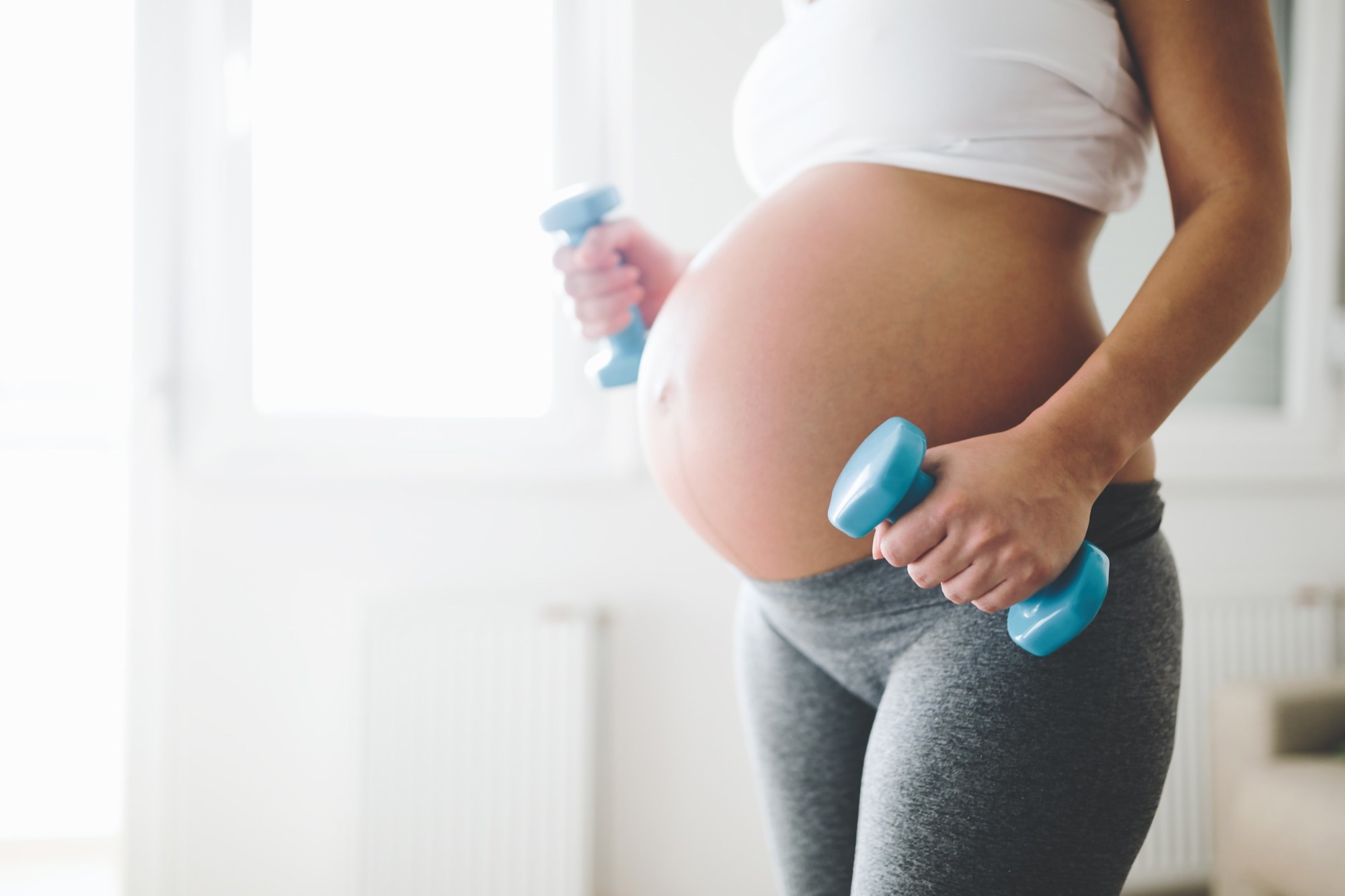In a recent study published in the F&S Reports Journal, researchers reviewed existing literature to understand the effect of exercise on fertility.
The study considered and accounted for the patient characteristics and factors that may warrant modifications in the intensity and frequency of exercise.
 Study: The effect of physical activity on fertility: a mini-review. Image Credit: NDABCreativity/Shutterstock.com
Study: The effect of physical activity on fertility: a mini-review. Image Credit: NDABCreativity/Shutterstock.com
Background
Guidelines on reproductive medicine by the American Society for Reproductive Medicine provide clear recommendations about factors such as diet, alcohol intake, and smoking and their impact on conception.
However, the guidelines on the impact of exercise and physical activity levels on fertility and the probability of conception lack clarity. This makes it difficult for healthcare providers to provide patients with recommendations on the intensity and frequency of exercise levels that must be followed to maximize conception chances.
Furthermore, these recommendations must also consider the patients’ baseline fitness levels, existing health conditions, and conditions related to infertility.
Therefore, it is essential to understand the association between exercise and fertility to formulate guidelines that help patients maintain an exercise regimen that positively impacts their conception chances.
About the study
In the present study, the researchers conducted a comprehensive keyword search for research related to physical activity and exercise and factors such as fertility, infertility, ovulation, menstrual cycle, polycystic ovarian syndrome, and assisted reproduction.
Experimental and observational studies involving both female and male patients were included in the review. The three major groups identified in the selected studies were women who were healthy and trying to conceive, women undergoing treatments for assisted reproduction, and women with polycystic ovarian syndrome.
The review only included studies that used objective fertility markers such as ovulation, pregnancy, and ovarian hormone (progesterone and estradiol) levels throughout the menstrual cycle.
Studies that focused only on surrogate markers such as androgen levels or acne associated with polycystic ovarian syndrome or self-reported menstrual cycle irregularities were excluded from the review.
Physical activity was defined as all non-leisure and leisure activities that elevate energy expenditure above resting levels. At the same time, exercise was considered purposeful, repetitive, and structured physical activity performed to achieve or maintain specific fitness levels.
Exercise and physical activity can be measured using objective markers such as metabolic markers and heart rate. Exercise levels were categorized from mild to vigorous based on these measures.
Exercise levels ranging from moderate to vigorous have been associated with a lower risk of diseases such as cancer and cardiovascular disease, and regular exercise comprising moderate to vigorous intensities are known to result in improved outcomes related to mental health and fetal health among pregnant women.
Furthermore, for the general population and women with infertility, regular exercise has been shown to improve symptoms associated with anxiety and depression.
However, clarity on the impact of mild to vigorous activity on the fertility of women who are struggling or attempting to conceive is lacking.
Results
The results indicated that several studies report a detrimental impact of vigorous and intense exercise levels on the conception chances of healthy women attempting to conceive, especially concerning luteal progesterone and estradiol levels.
However, another major study recommends that women trying to conceive can continue their regular exercise regimen if they balance their energy expenditure by increasing their caloric intake.
In contrast, for women with polycystic ovarian syndrome, moderate levels of aerobic exercise were found to have no significant impact on improving conception chances. Among women with polycystic ovarian syndrome, resistance training and vigorous levels of aerobic exercise were associated with reproductive benefits.
Furthermore, in cases of hyperandrogenicity, a vigorous and intense exercise regimen is required for the benefits to maximize. Therefore, the recommendations must include a sustainable exercise regimen for long periods.
Additionally, for women with polycystic ovarian syndrome, the reproductive benefits might not necessarily be in the form of weight loss, and healthcare providers must inform the patients about the benefits of regular exercise on reproductive health, even without measurable weight changes.
For women undergoing treatments for assisted reproduction, the findings reported no significant negative or positive effects of exercise or physical activity either before or during in-vitro fertilization.
The review found that while vigorous exercise can have a negative impact on ovulation during natural menstrual cycles, the careful modulation of ovulation cycles through pharmacological methods during assisted reproduction circumvents the negative impacts of strenuous exercise on fertility.
Conclusions
Overall, the findings indicated that while vigorous exercise levels could negatively impact the fertility and conception chances of healthy women, they can continue their exercise regimen while trying to conceive as long as they compensate for the energy deficit by increasing their caloric intake.
In contrast, vigorous levels of aerobic exercise have been found to improve the conception chances for women with polycystic ovarian syndrome. For women undergoing in-vitro fertilization, exercise was found to have no impact on fertility.

 PARENTING TIPS
PARENTING TIPS PREGNANCY
PREGNANCY BABY CARE
BABY CARE TODDLERS
TODDLERS TEENS
TEENS HEALTH CARE
HEALTH CARE ACTIVITIES & CRAFTS
ACTIVITIES & CRAFTS

